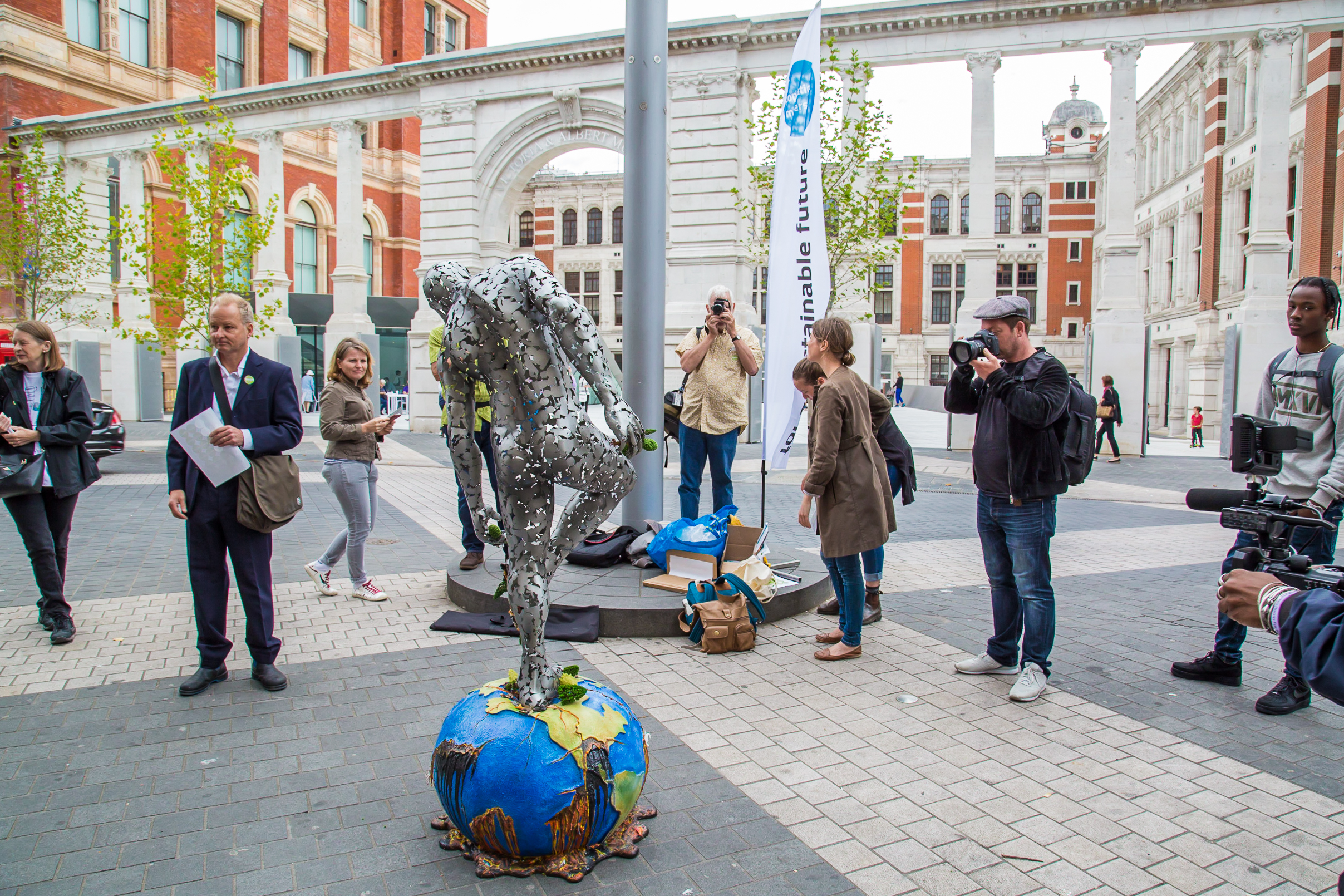
Meet Big Foot
In a week in which scientists warned that other species are facing “biological annihilation”, Population Matters is urging organisations which educate the public about natural history to stop pulling their punches and tell people what’s really going on. Earlier today, we launched our new ‘Welcome to the Anthropocene’ campaign outside London’s world-famous Natural History Museum, with the help of Big Foot, a spectacular and provocative “exhibit”.
Big Foot at the Natural History Museum
Big Foot
Life-size Big Foot is made of hundreds of steel mesh “babies” and is standing on, or rather in, a squashed planet Earth with the remains of living things on his over-sized foot. A strong message which we think is needed to help people wake up to the danger the living world faces and the urgent need to do something about it.
Last month, our director Robin and PM patrons Chris Packham and Professor Aubrey Manning wrote to the Natural History Museum’s director, Sir Michael Dixon, asking him to ensure that the museum provides its millions of visitors with vital information about the state of our planet. In their letter they asked him to ensure the museum “takes the lead in presenting the facts about the impacts of our species upon the Earth, its biodiversity and ecosystems”, saying it is entirely in line with the museum’s stated mission:
…to challenge the way people think about the natural world – its past, present and future. We aim to stimulate public debate about humanity’s future and equip our audiences at every level with an understanding of science.

Welcome to the Anthropocene
The impact of human beings who have been on the Earth in the last 200 years has been so deep that scientists are now calling for our period in the planet’s history to be called the ‘Anthropocene’ – the age of humans. Tragically, our impact has almost always been for the worse. Species of animals and plants are disappearing so fast that scientists and conservationists call it the ‘sixth mass extinction’.
The fine balance of chemicals in our air and seas has been disrupted with dangerous consequences – our carbon emissions are driving global warming and ocean acidification, while excesses of nitrogen and phosphorous from industry and agriculture are turning parts of the sea into dead zones.
Our enormous population growth – we are now adding a billion people every 12 to 15 years – and consumption are driving these changes. Population growth is not inevitable and we can end and reverse it, to the benefit of everyone, and everything, on our planet.
Find out more about the Anthropocene, the reasons for it and how we can help put things right on our Welcome to the Anthropocene campaign page.





